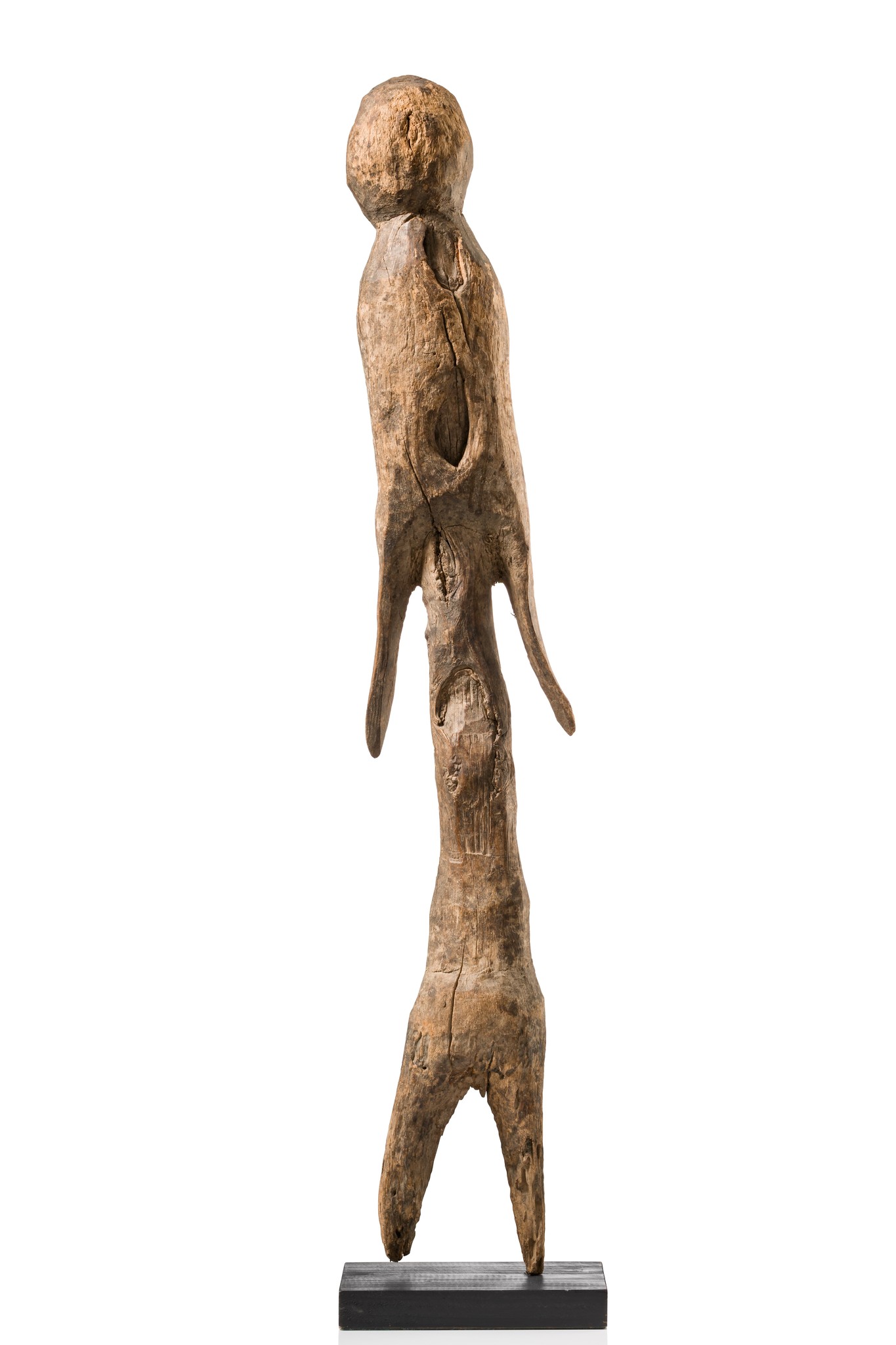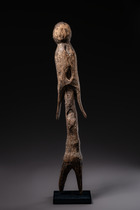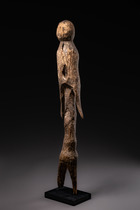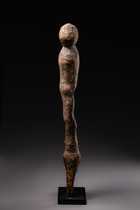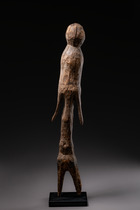Figure de sanctuaire "sakap tchitcherik" (pl. "tchitcheri") · Togo, Moba · ID: 3052235
Description
wood, base
According to Mullen Kreamer “tchitcheri” fall into three distinct categories, small (“yendu tchitcheri”), medium (“bawoong tchitcheri”), and large “‘sakap” / “sakwa tchitcheri”), each size corresponding to a special function (Christine Mullen Kreamer, “Moba shrine figures”, in: African Arts, February 1987, Vol. XX, No 2, p. 52-55).
The large “sakap tchitcheri” represent and are named after ancient clan ancestors of particular districts, villages, or sections of villages. In earlier times, they are said to have been associated with hunting. When this lost its importance, their responsibility shifted to bringing about successful harvests.
‘Tchitcheri’ were reserved for use with the household shrines (“bawoong”) which ensure the health and prosperity of the family, the proliferation of farm animals and fowl, and a successful harvest each year. They were frequently seen in the Moba villages, leaning against exterior vestibule walls or lying inside stone circles that served as main sacrificial sites.
The"’tchitcheri" represent fairly recent ancestors, usually fathers, mothers, grandfathers, or grandmothers of compound heads.
The diviners decided when such a figure should be carved and ‘prescribed’ it to clients who were plagued with family problems such as diseased livestock or lack of children. It was also he who determined which ancestral spirit should be represented by the figure and thus served as an intermediary to the gods. (According to Mullen Kreamer, African Arts, February 1987, Vol. XX, No. 2, p. 53 f.)
Littérature comparée
Christine Mullen Kreamer, Moba shrine figures, in: African Arts, February 1987, Vol. XX, No 2, p. 54 f.

